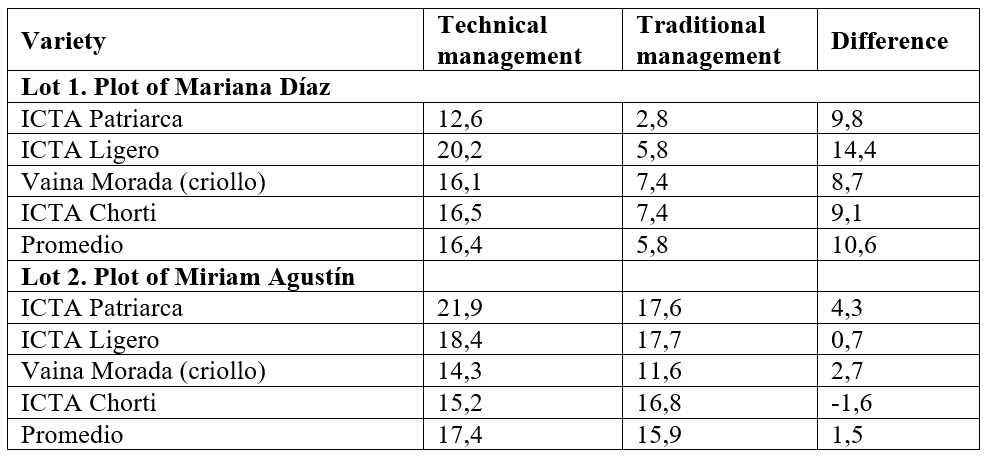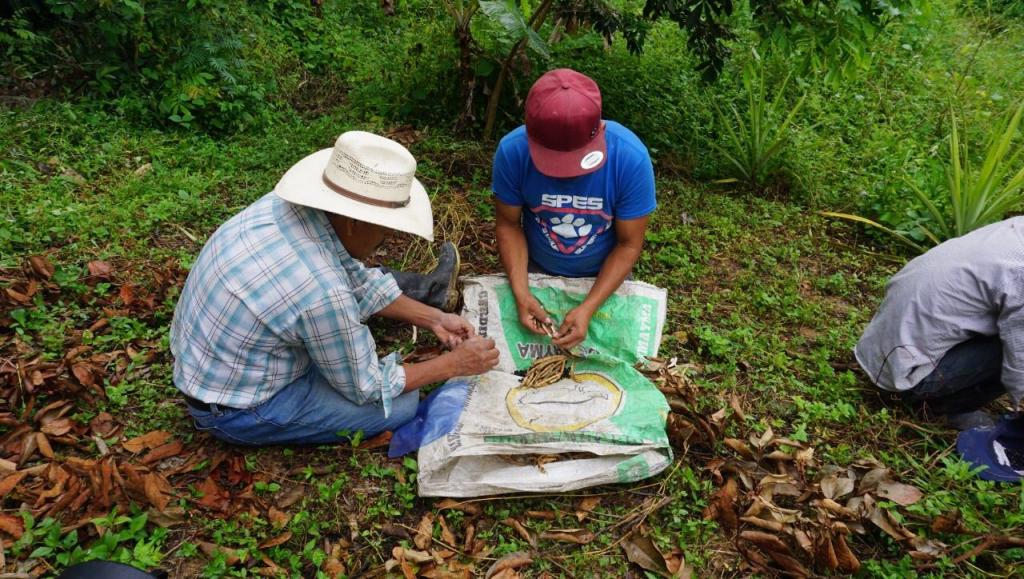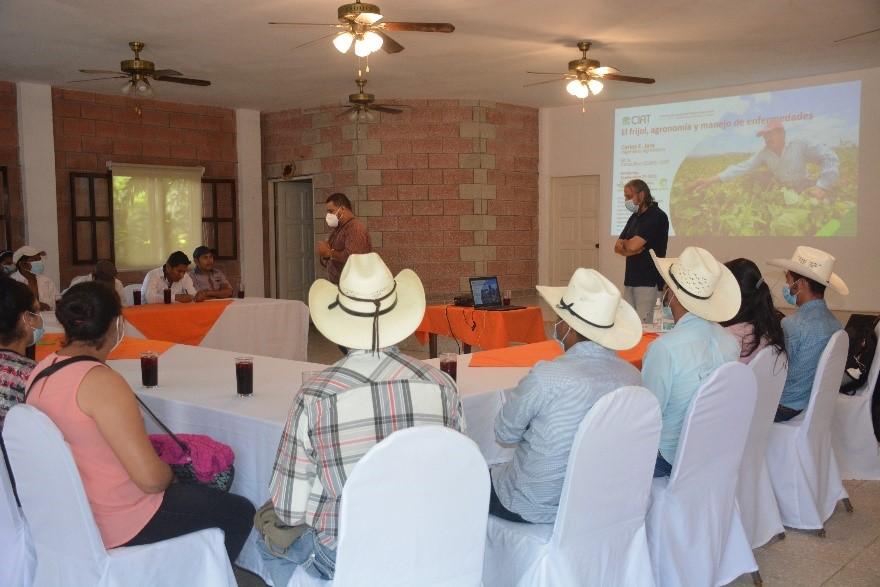Evaluating bean crop management through the Olopa TeSAC

Guatemala is one of the most susceptible countries in Central America to climate variation. Seven of its twenty-two departments are located in Central America’s dry corridor, where heat waves have behaved irregularly in recent years; either going on for longer than usual or changing its onset dates as a result of a decline in precipitation during the rainy season.
One of the main crops that farmers develop in the dry corridor is beans, an important crop for food security. This means that the negative impacts of climate variation in the dry corridor can have a profound impact on the food security of families. For this reason, effective agro-climatic risk management has become crucial in Guatemala, as it can lead to more effective agronomic management and decision-making based on the best available climate information.
In order to enable better agro-climatic risk management in the dry corridor, the Climate-Adapted Sustainable Territory (TeSAC) located in Olopa (Chiquimula), conducted a study in collaboration with local farmers, CGIAR's Research Program on Climate Change, Agriculture and Food Security (CCAFS, for its acronym in English) and the Ch'orti 'Regional Peasant Association (ASORECH).

This study looked to determine the effect of two bean planting systems in monoculture: one done in the traditional way that farmers in that region have used for generations, and another in the technically recommended way.
The trial was carried out during the second season, as a strategy to improve production in the rainy season and to be able to store more grain for family food or the sale of surpluses. For the experiment, two lots located in the plots of Mariana Díaz and Miriam Agustín were selected. In each lot, the farmers used both the traditional and the technically recommended planting methods so the results of each in the same lot could be compared, and were farmers who have been part of the TeSAC for more than two years and have been empowered in the use of agroclimatic information and the implementation of CSA practices.
Improving the production of farmers in the region
Throughout the trial, daily records of precipitation and temperature were taken in the lots where the sowing took place, monitoring the environmental conditions in the different phenological states of each crop.
Lot 1: Mariana Díaz
During the first 35 days, Lot 1 experienced a 24-day heat wave (between July 5 and 28), which forced the farmer to carry out three irrigations of 5 mm. In the post-flowering phase, the crop had a surplus of rainfall, registering more than 270 mm of excesses that, due to the texture of the soil and the slope of the field, did not cause any type of damage. The total precipitation was 709 mm.

Orange: Crop requirements
Lot 2: Miriam Agustín
In Lot 2 there was also a heatwave – this time for 23-days, between between July 7 and 30. So, three irrigations of 5 mm were also carried out.. The total rainfall was 605 mm, however, the rain was better distributed. Between the flowering and grain-filling phase, the crop had a rainfall surplus of 149 mm.

Orange: Crop requirements
The harvest was made in the two central furrows for both batches and the yield was measured through the weight of 100 seeds, number of pods per plant, number of seeds per pod and number of harvested plants; as well as the weight of the plot and the yields were compared with the farmer's plot.
The results of yields expressed in qq / mz are observed below:

The difference between winning and losing
The yields in Lot 1 with traditional management were very low since the farmer only weeded the crop on day 30 and did not carry out the cultivation work of tilling, or taking steps to protect it against diseases. In addition, the sowing density was significantly lower than that carried out according to the technical recommendations at the time of sowing, which translated into a strong difference in yields.
When comparing between the lots, the average yields obtained show a strong difference between a farmer who adopts some minimal cultural practices (Miriam Agustín) and another who does not adopt any (Mariana Díaz). It is important to emphasize the fact that implementing some cultural practices such as weeding and disease control is reflected in a significant increase in yields.

The average of both tests under technical management was much higher than that obtained by farmers who sowed in a traditional way, despite not having had the desired density due to waterlogging problems, so it is estimated that these yields could have been even higher.
Based on the above, together with the farmers, it was concluded that it is important to keep the cultivation clean of weeds, adequately control pests and diseases, and increase the planting density - practices that are not commonly carried out in the region.
It was also possible to conclude that there are varieties that perform better than others in the area, under the current climatic conditions, such as ICTA Ligero. The Creole variety "Vaina Morada" also shows to behave well; However, it is evident that the potential of the variety is not used due to the shortcomings mentioned in the management of the crop.
Reducing crop losses through knowledge exchange
Based on the results obtained in Olopa, a training session was conducted with farmers from the TeSAC of Santa Rita in Honduras, focusing on the agronomic management of beans and their main diseases. The water requirements and phenological stages of beans were also discussed together with the farmers, and the results of the research work carried out in Olopa were socialized, emphasizing:
- The improved varieties generally outperformed the local variety.
- The conditions of the La Prensa community are suitable for growing beans and have the potential to generate very good yields by adopting cultural practices and following agroclimatic forecasts.
- It is highly recommended to encourage more small-scale planting of beans in subsistence and infra subsistence farmers.
- The Traditional 2 trial tripled the Traditional 1 yields just by implementing cultural practices.

For further information: